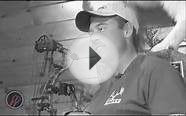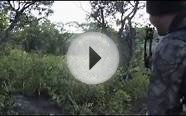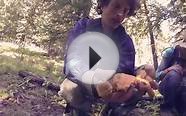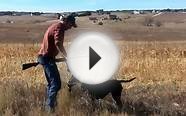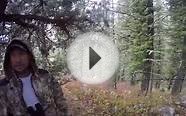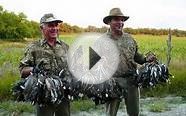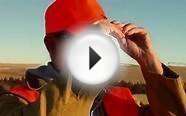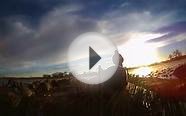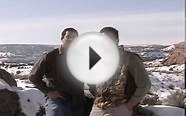Hunting in Colorado
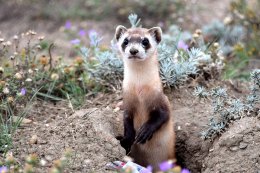 I was hunting with my dad on public land in the Flat Tops Wilderness. We backpacked in and hunted hard every day. We saw several elk that were running or were too far away, called in a young bull moose and even saw a big bull moose grunting at a cow only about 20 yards from us. On the third day we got up before 4 a.m. and hiked to a high-elevation meadow where we saw a few elk feeding. I crawled on my stomach through rocks and brambles, up to a small rise where I made a 170-yard shot on a feeding cow elk with my 7mm-08. It ran 20 yards before falling perfectly on flat ground with her head resting on a rock.
I was hunting with my dad on public land in the Flat Tops Wilderness. We backpacked in and hunted hard every day. We saw several elk that were running or were too far away, called in a young bull moose and even saw a big bull moose grunting at a cow only about 20 yards from us. On the third day we got up before 4 a.m. and hiked to a high-elevation meadow where we saw a few elk feeding. I crawled on my stomach through rocks and brambles, up to a small rise where I made a 170-yard shot on a feeding cow elk with my 7mm-08. It ran 20 yards before falling perfectly on flat ground with her head resting on a rock.
Conservation is at the heart of Colorado Parks and Wildlife’s mission. And no other scientific principle is more responsible for creating Colorado’s enormous abundance of fish, wildlife and its world-class outdoor recreation. Yet, despite its importance to our state, conservation—in the context of wildlife management—is a concept that’s often overlooked and misunderstood.
Whether you’re a hunter, angler or just someone who enjoys Colorado’s wildlife and wild places, here are six things you should know about wildlife conservation:
1. What is Wildlife Conservation?
Although conservation is a term that’s commonly used when discussing resources like water and energy, it can be challenging for many people to understand how conservation applies to wildlife. Simply stated, conservation is defined as the “wise use” and active management of wildlife, where biologists manage wild animals, fish and their habitats in order to achieve specific and measurable outcomes. This includes regulating overabundant or depleted wildlife populations, protecting threatened and endangered species, reintroducing native animals and raising/stocking fish. In addition, a critical component of conservation is recognizing that wildlife is held in the public trust (wildlife is a public resource).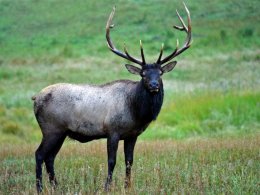 Therefore, fish and wildlife must be managed for the benefit of all citizens, providing people with the opportunity to enjoy and experience the natural environment through fishing, hunting, wildlife viewing and a variety of other outdoor pursuits. Read more
Therefore, fish and wildlife must be managed for the benefit of all citizens, providing people with the opportunity to enjoy and experience the natural environment through fishing, hunting, wildlife viewing and a variety of other outdoor pursuits. Read more
The most important thing to remember is that your survival kit is NO GOOD unless it is with you. When I venture more than 200 feet from the truck, trailhead or camp I always make sure I have my survival kit.
This small kit includes those things that will enable you to survive an unforeseen situation. Your kit should contain the tools necessary to build a fire, provide shelter, signal for help and stay hydrated:
- FIRE – metal match and Vaseline-soaked cotton balls
- SHELTER – 4mm-thick bag, 8×10 tarp
- SIGNAL – whistle, mirror, orange flagging tape
- HYDRATION – chlorine tablets
If you’re a Colorado big-game hunter, now’s the time to prepare for the 2016 fall hunting seasons. Many of Colorado’s big-game licenses are allocated through a limited drawing based on a preference-point system. Colorado Outdoors magazine is a must-have resource if you’re planning on participating in this year’s drawing. The Jan/Feb issue features preference-point data and statewide big-game population estimates to help guide you in applying for a limited big-game license. Don’t miss out on your opportunity to experience the thrill and adventure of a Colorado big-game hunt this season. The application deadline for the 2016 limited-license drawing is April 5. To order the 2016 “Preference Point” issue or to purchase an annual subscription to , please click HERE.
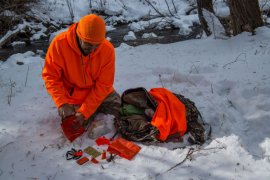
Although I’ve been an avid upland and big-game hunter for most of my life, over the years I’ve only dabbled in waterfowl (duck and goose) hunting. And after moving to Colorado from Minnesota seventeen years ago, waterfowl hunting fell completely by the wayside, until a friend and dedicated waterfowler, Tim Brass (State Policy Director for Backcountry Hunters & Anglers), invited me on a January 2015 goose hunt.
Watching V-shaped flocks of honking Canada geese flying overhead, not to mention those enticed to within shotgun range, rekindled my desire to hunt waterfowl. For those with the same latent duck and goose hunting itch, first you’ll want to purchase the appropriate licenses and stamps. Waterfowl hunters need a small-game license, for starters.
Hunters age 16 or older are also required to purchase a $25 Federal Migratory Bird Hunting and Conservation Stamp (Duck Stamp) and a $5 Colorado State Waterfowl Stamp. In addition, pick up a $10 Colorado Habitat Stamp (for anyone aged 18 to 64), but only one is required per hunter each year, in the event you bought one with your turkey, big-game or upland-game license.
Read more
Located in remote southwest Colorado, Mancos State Park provides camping, fishing and connector trails for hiking, cross-country skiing and snowmobiling into the vast San Juan National Forest. It’s also just a 20-minute drive to world famous Mesa Verde National Park. This video provides a glimpse of one of the more popular winter activities at Mancos: ice fishing. Video produced by Joe Lewandowski/CPW.
For most of us, the new year is a time of reflection. Specifically, it’s a chance to look back at the previous 12 months and identify the things we would like to change in our lives. But more important, the proverbial blank canvas that emerges as one year ends and a new one begins is a prime opportunity to set new goals.
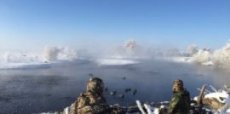
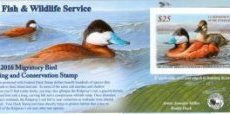
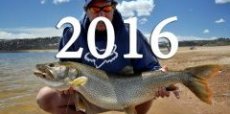
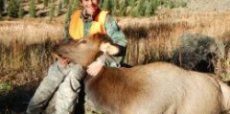
You might also like
